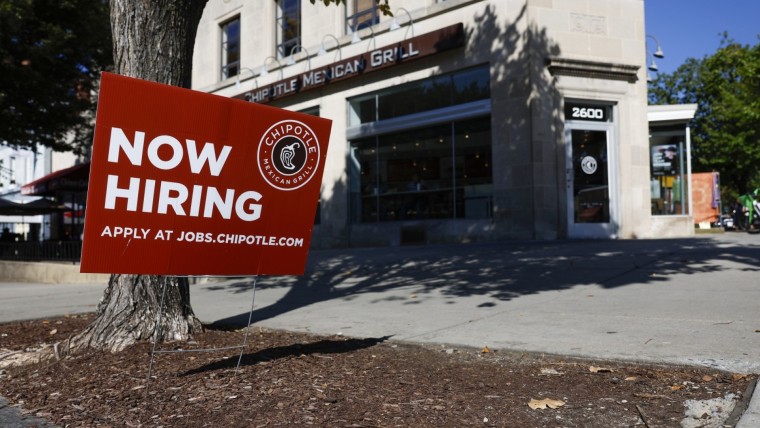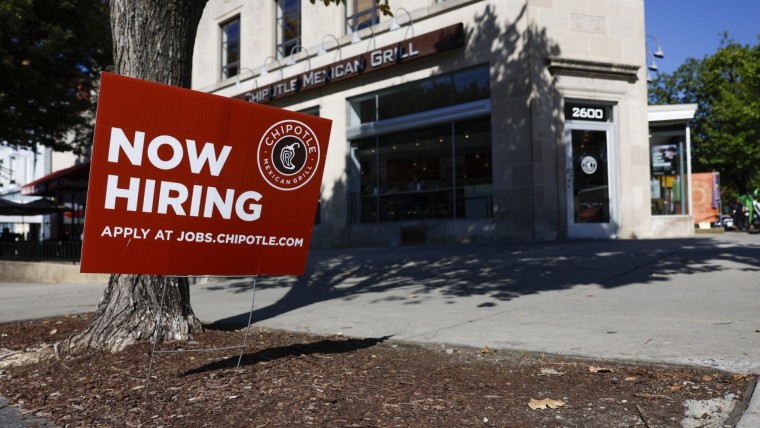Three years after the COVID-19 pandemic wiped out millions of jobs, a historic labor market recovery continues to pull in workers from all corners of the economy — and disabled workers are among the biggest beneficiaries.
Federal data released Friday showed the economy added 311,000 jobs in February, beating economists’ expectations. It’s the latest sign that despite a continuing wave of layoffs among big-name companies, employers overall remain hungry for workers.
While that appetite has driven the nation’s overall unemployment rate back down to pre-pandemic levels, unemployment among those with disabilities has fallen beneath 2020 levels.
At 7.3% last month, the unemployment rate among disabled workers is down from 8.8% a year ago. However, that figure remains higher than both the national unemployment rate of 3.6% for all workers and the 3.7% rate among workers without disabilities, underscoring the barriers that many disabled employees face even in a red-hot labor market.
Catherine Latorre is among those benefiting from the job boom.
The 60-year-old with stage 3 heart failure works as a cashier at a supermarket in Cheshire, Connecticut. She’s been on the job for just a week, jumping from a role she held for a few months at a local YMCA.
Before January, Latorre said she had been out of work for four years. Despite struggling with some physical tasks at the supermarket, she said her duties there are much safer for her. And while the new role pays about the same as her previous one, her hours allow her to take classes to finish her high school degree.
Latorre said she wanted to get back to work because she has to look after a sister who was diagnosed with cancer.
“People can’t survive on disability, especially with the prices that are going crazy now,” she said.
Ability Beyond, a nonprofit offering employment assistance to those with disabilities in Connecticut and New York, helped connect Latorre with her current job. Carrie O’Connell, director of Ability Beyond’s programs and services, said businesses are eagerly asking programs like theirs for help.
“The tides have turned,” O’Connell said. “Businesses are coming to us, knowing that it is a good group of people who can work and should work, and want us to find job opportunities for them.”
Roughly 1 in 4 adults in the U.S. has a disability, according to the Centers for Disease Control and Prevention. Disabilities range from cognitive conditions such as autism spectrum disorders to hearing, mobility and vision-related impairments. And while many Americans have lifelong disabilities, some conditions that affect employment are temporary or situational.
In addition to the sheer number of open positions — there were about 10.8 million unfilled roles nationwide by the end of January, up from 7 million pre-pandemic — other factors could be driving more workers with disabilities into the labor force: broad-based pay gains, a need for income as inflation squeezes household finances, more hybrid and remote opportunities, and corporate efforts to diversify their workforces, including through expanded accommodations.
There’s also Covid.
A study released in October by the Brookings Institution suggested that much of the uptick in disabled Americans who are working reflects those suffering with the constellation of symptoms known as “long Covid,” many of which can last months or years after an infection.
Brookings researchers estimated last summer that long Covid could have been keeping up to 4 million Americans out of work. But noting that the labor force rates of people with disabilities has increased sharply since the onset of the pandemic, Louise Sheiner, a senior fellow and co-author of the October study, said millions of others are likely reporting to work despite grappling with the effects of long Covid.
“We think it’s mostly a composition effect,” said Sheiner. The many adults with long Covid symptoms, she said, “push down overall labor force participation, but they push up the labor force participation of people with disabilities.”
Experts and disability advocates say some workplaces have become friendlier to professionals with disabilities.
Ari Ne’eman, a Ph.D. candidate at Harvard, analyzed government data on employment among disabled people since the pandemic began and found that disabled workers saw stronger job gains in telework positions than those without disabilities did. Ne’eman said the trend may simply reflect the boom in job openings but could also be the result of “systemic change” that has made some jobs more accessible.
“If that is, in fact, the explanation for our findings, then it would suggest that these gains may persist even as the economy cools,” Ne’eman said.
In 2014, Matthew Shapiro, 32, started 6 Wheels Consulting, based in Richmond, Virginia, to advise businesses on disability-related issues. Shapiro, who was born with cerebral palsy and uses a power wheelchair, said the past year has generated his most revenue to date.
Shapiro said he now enjoys more ability to pick and choose which projects to handle on-site versus from home. He was recently hired by an architecture firm to consult on the remodeling of the Virginia Supreme Court building. In September, he advised the Dollywood theme park in Pigeon Forge, Tennessee, on redesigning its parking.
“I worked harder than I ever have in the last two and half, three years because I could do everything from home,” said Shapiro. “Having to travel to meetings, having to travel to meet different clients — that all went out of the window.”
Before the pandemic, Shapiro said he and other disability rights advocates had pushed for years for more flexible work schedules, to little avail.
“The excuse we had always heard is like, ‘Oh we can’t do that, because that would require us to have all these accommodations and everyone has to be in the office from 9 to 5,’” he said. “Now we know all that stuff is baloney.”
Like Shapiro, many with disabilities have started their own businesses, in part to avoid such wrangling with employers. Government statistics show 9.5% of workers with disabilities are self-employed, compared with 6.1% without disabilities.

Colette Divitto graduated from Clemson University in South Carolina but said she was turned away from job interviews for two years back home in Boston. Divitto said she was sometimes told she was “not a good fit” after employers learned she has Down Syndrome. So she started her own cookie company seven years ago, ultimately hiring a staff of 15 — half of whom are people with disabilities.
“It breaks my heart for the people out there who cannot find jobs,” Divitto said. “It’s hard, because I know exactly how they feel, those who cannot find jobs. Because they really want to earn a living, really want to pay the bills on time.”
Source: | This article originally belongs to Nbcnews.com











